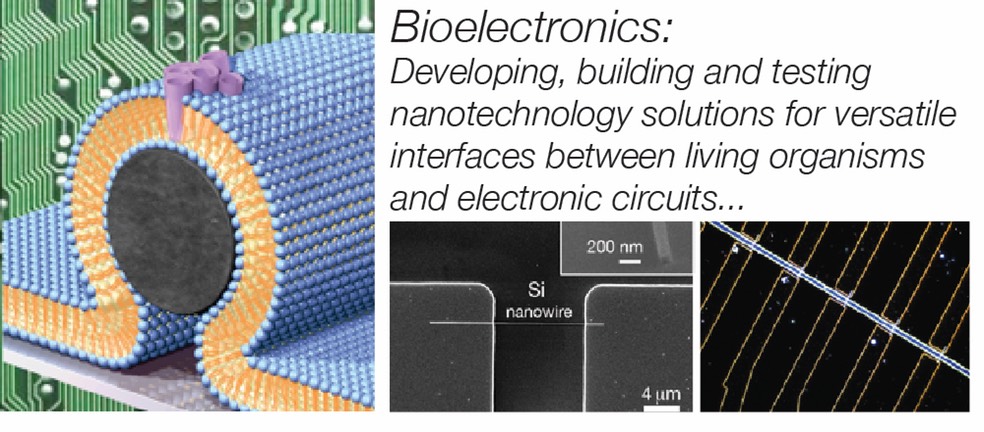
We work at the interface of biophysics and materials science to develop novel nanostructures and devices that seamlessly integrate biological molecules with electronic circuits. Our goal is to develop versatile interfaces that allow seamless bidirectional information exchange between biological organisms and electronic devices and open new paradigms in bioengineering, medicine and nanotechnology.
Our main thrust is focused on using 1D nanoelectronic materials, such as carbon nanotubes and silicon nanowires, to construct electronic devices that incorporate functional biological membrane proteins, channels, and pumps. These devices can control the protein functionality, read the signals sensed by these proteins, and mimic the cellular transport processes.
We also use carbon nanotubes to study fundamentals of nanofluidic transport. Our research in this area focuses on carbon nanotube porins - artificial membrane channels that mimic the transport functionality of biological channels and pores, and give an easy and flexible experimental system to study transport in extremely confined environments.
Other research projects in the group include high-speed in-situ atomic force microscopy of biological processes



